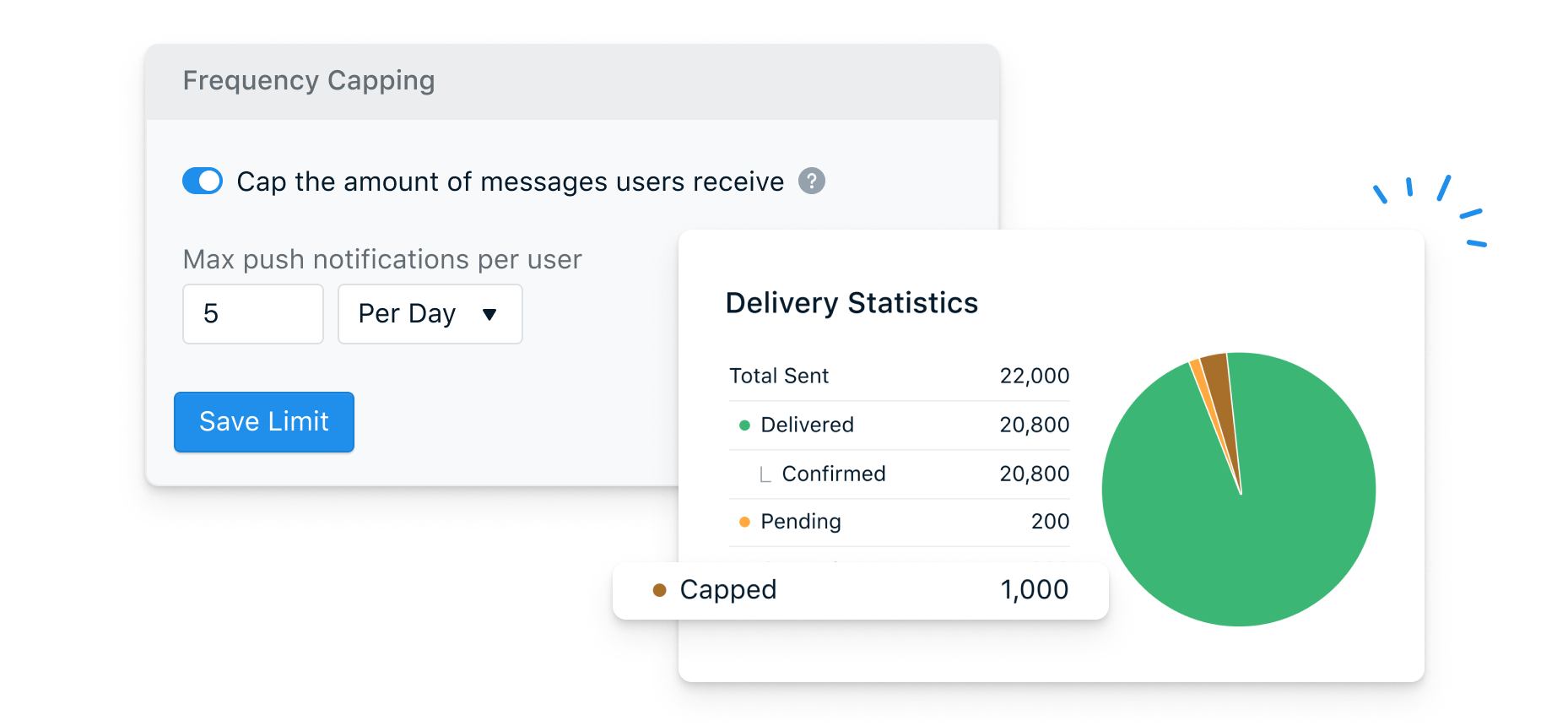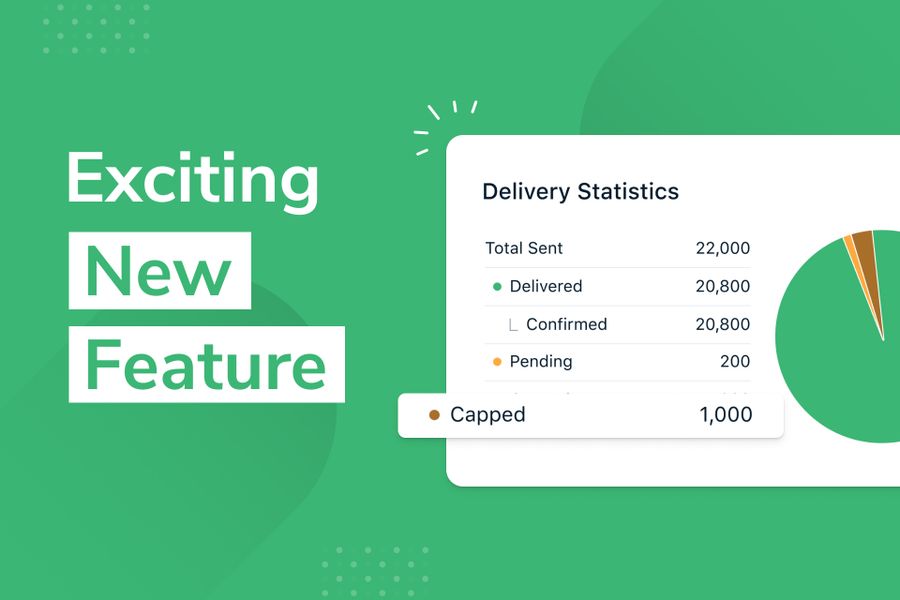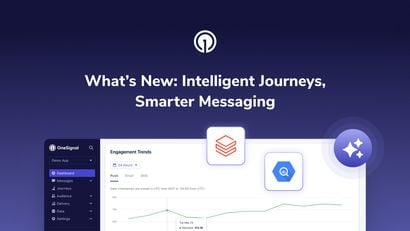Although push notifications usually enhance your user experience, sending too many notifications can have the opposite effect. User messaging fatigue can turn positive feelings about your app or website into negative feelings, or even cause unsubscribes or uninstalls.
To help mitigate this risk and support positive user relationships, we’ve launched frequency capping controls. This allows you to define the maximum number of push notifications that can be sent to a user within a specific time period. You can set a messaging limit based on intervals of an hour, day, or week, which will limit sends on a rolling basis.
For example, if you set a limit of three notifications per day, once you’ve sent three messages to a user in a 24-hour period, you will not be able to send any more. Once the oldest of those three messages passes out of that 24-hour range, you will be able to send another notification to this user.

3 Signs that Frequency Capping Can Help You
Have your open and click rates decreased? Have you seen an increase in opt outs or app uninstalls? Limiting the number of notifications you send to your users is considered a best practice, and frequency capping will help prevent you from over-messaging users. Many companies can benefit from frequency capping, especially those that typically send a high volume of notifications or manage multiple campaigns.
1. You run a variety of different messaging campaigns.
Companies often run multiple messaging campaigns at once, and these campaigns may be managed by different teams. Keeping track of all these campaigns, along with automated push messages and API triggered messages, can be a lot to handle.
For example, a gaming company may have an operations team that wants to send an account update, a product team that wants to send an update on a new release, a marketing team that is running promotions, a lifecycle team that wants to send a re-engagement campaign, and one or more automated push workflows set up. Frequency capping prevents over-messaging users across different campaigns without having to manually keep track of each.
2. Your subscribers belong to multiple audience segments.
Many messages are sent to specific audience segments, which are defined using specific user characteristics, interests, and behaviors. Although you may create many different segments, it’s important to remember that these lists may not be mutually exclusive. For instance, if you are using our Category Slidedown prompt to tag users, remember that users may subscribe to multiple categories. A single user may exist in multiple audience lists, but that doesn’t mean you want to overwhelm them with all the notifications.
For example, a pet store could be planning new promotional campaigns for dog lovers, cat lovers, recent kibble purchasers, self-serve pet wash customers, and a general sales promotion. Although they’re creating five separate messaging campaigns, they may have customers that fit into multiple or all of those categories. This customer can apply frequency capping to avoid bombarding customers with all five notifications at once.
3. You send a lot of transactional messages.
Many companies set up transactional API notifications based on user engagement. Depending on the trigger, high engagement could lead to a high volume of messages. Frequency capping can be especially useful for companies that notify their users of a lot of activity, such as a social media company that notifies users each time people engage with their posts or an e-commerce platform that notifies sellers each time someone interacts with their item.
The appropriate frequency capping limit will vary based on your company, industry, geography, seasonality, how many messaging channels you use, and other factors. Analyze your user interaction data to find the right balance and cadence for your messages. Using frequency capping, and other best practices such as segmenting your audience, personalizing your message content, and honing your timing will help you build trust and earn user loyalty.
How to Add Frequency Capping to Your Messaging Strategy
To set up frequency capping, go to your app settings and specify the maximum number of messages per interval to send to a user. You also have the option to override the frequency cap when creating a new notification. That way, if you have an important last-minute campaign, overriding will ensure your message is still sent to the entire audience even if some users have reached their message limit.
Frequency capping is now available to our Enterprise users. To get started, check out our documentation. Want to learn more about the Enterprise Plan? Contact us to unlock frequency capping and gain more control over your messaging strategy.
Contact Us



